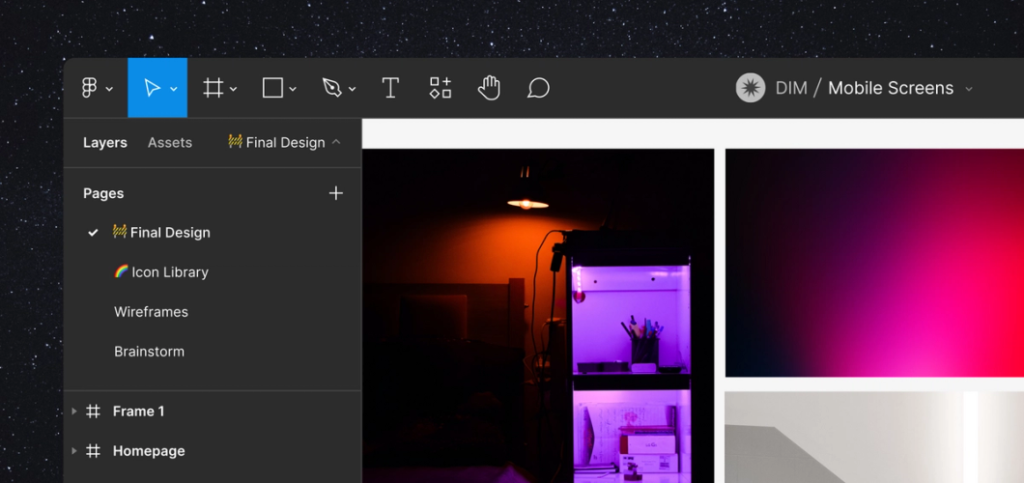Over the past several years, Figma has built its name as a forward-thinking and collaborative design platform and a formidable competitor to Adobe, the giant in the creative apps market. That rivalry ended on Thursday when Adobe announced that it has struck a $20 billion deal to acquire Figma.
The acquisition will allow Adobe to incorporate Figma’s popular design tools into its widely-used portfolio of creative apps. But the acquisition also means that Adobe will once again be taking a major competitor off the market and bringing it under its own umbrella, to the dismay of many designers who rely on the tool and are wary of another critical platform joining the company’s Creative Cloud service. And they have a point: with Figma off the market, the list of companies capable of challenging Adobe’s empire just got meaningfully smaller.
The Figma team will have “complete autonomy”
Adobe says the current plan is essentially for nothing to change. “I think that acquisitions are only done well when they’re done uniquely based on the company and that you never follow a playbook,” Scott Belsky, Adobe’s chief product officer and EVP of Creative Cloud, said in an interview with The Verge. Belsky says the Figma team will have “complete autonomy.”
Figma’s independence is a point they have been underscoring repeatedly; a LinkedIn post from Belsky and a blog post from Figma CEO Dylan Field both mentioned that the plan is for Figma to continue operating autonomously. “The last thing that anyone wants is to disrupt either one of our roadmaps,” Belsky said. That means no plans to bring Figma inside of Creative Cloud and no changes to Figma’s pricing, according to Belsky.
If anything, the earliest changes might be on Adobe’s side. Adobe has been winding down its investment in Adobe XD, its competing design platform for things like apps and websites, and XD users could be nudged over to Figma in the future, according to Belsky. “It was never because we didn’t think product design and development and this vertically integrated stack was a big opportunity,” he said. Right now, Adobe has a “tiny team” supporting XD for its existing customers. “Once [the acquisition] closes, then we’ll figure out how to serve those customers, likely with Figma,” he said.
Field knows that they have to earn customers’ trust. “We have to establish that trust for Adobe and for Figma by being really consistent over time around what we do, the actions we’re taking, and showing up for the community and doing what’s right here.”
Adobe has a history of buying up some of the biggest tools in the creative space, acquiring companies like Frame.io, a video production collaboration tool, and Behance, which lets people showcase their creative work. (Belsky first joined Adobe through this acquisition.) The company has bought a lot of companies — even Photoshop was an acquisition. That makes the Figma purchase all the more concerning for designers; one of the few notable challengers to Adobe has been swept up, meaning Adobe will continue to consolidate creative app power in one location.
The purchase isn’t necessarily an antitrust concern, but it could still fall under scrutiny by regulators. “It certainly looks like Adobe is in a dominant market position, and this acquisition would increase that dominance,” Matt Kent, a competition policy advocate for the consumer advocacy organization Public Citizen, said in an interview. But just because Adobe is big doesn’t necessarily mean that the merger violates the law, he said.
“Any developers in that community being acquired by Adobe will likely be stifled”
Competing developers had mixed views on the acquisition. Affinity, which offers its own suite of creative software, thinks the acquisition could reduce innovation in the creative app space. “Any developers in that community being acquired by Adobe will likely be stifled, as their objectives are realigned to what’s good for Adobe. Ultimately that can only reduce the choice available for creatives,” Ashley Hewson, managing director of Affinity developer Serif, said in an emailed statement.
Alludo, which makes the Corel suite of tools, took a more positive tone. “While we don’t have a specific comment on Adobe’s news, this move is definitely validating in terms of what we’ve believed for many years now — collaboration tools are critical in the design world,” Prashant Ketkar, CTO and CPO of Alludo, said in an emailed statement. “We expect this movement will only gain momentum.”
Adobe’s also making this acquisition during a time when the regulatory bodies are getting more serious about cracking down on big tech mergers. The Federal Trade Commission (FTC) filed to block Meta’s acquisition of the company behind VR fitness app Supernatural in July, for example, and sued to block Nvidia’s now-scrapped acquisition of Arm in November. FTC spokesperson Betsy Lordan said the FTC doesn’t comment on proposed transactions, and Department of Justice spokesperson Arlen Morales declined to comment.
The Figma acquisition is expected to close sometime in 2023, and it will need to pass regulatory scrutiny before it does. If that happens, both companies will have a lot to prove. In January 2021, Field tweeted that “our goal is to be Figma not Adobe,” and I asked him how he felt about that tweet now that he will soon be a part of Adobe. “I still stand by that tweet, and not because I have any reservations about Adobe,” he said. “We are very focused, throughout all of our conversations about this acquisition, on [the] autonomy of Figma.”

